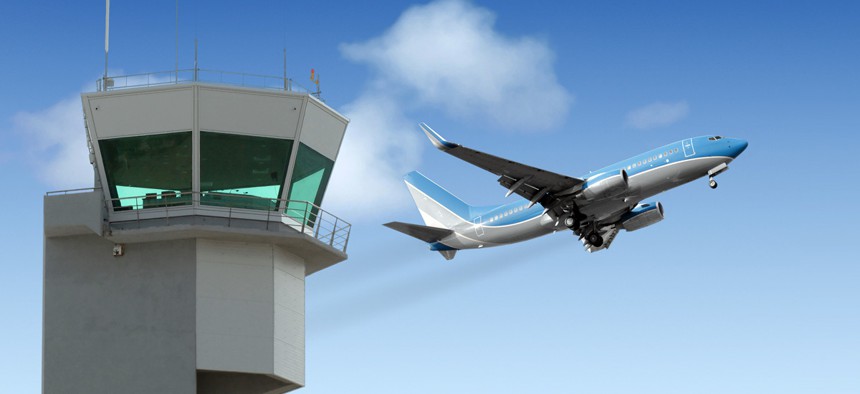This NASA Software Aims to Make the Skies a Little Bit More Organized

James Steidl/Shutterstock.com
The tool is expected to help air traffic controllers better manage the spacing between each aircraft as they make their final descent.
NASA may be best known for space exploration endeavors but here on Earth, it works with other agencies to design technology for craft flying slightly closer to the ground.
The space agency has developed a software tool for the Federal Aviation Administration so its air traffic controllers can coordinate aircraft landings in the most efficient way possible. The Terminal Sequencing and Spacing, or TSAS, technology aims to reduce the amount of fuel, emissions and congestion associated with aircrafts, according to a recent NASA statement.
The technology marks the fourth instance when NASA has handed over technology to FAA to help it improve its air traffic efficiency, NASA said. These partnerships are facilitated through the NASA/FAA Research Transition Teams.
TSAS is expected to help air traffic controllers better manage the spacing between each aircraft as they make their final descent. The technology will provide air traffic controllers with information on the appropriate speed to assign each craft so they “follow fuel-efficient, continuous-descent arrival procedures while passing through a region of airspace surrounding an airport,” NASA said.
The tool is specifically meant to help controllers increase aircraft efficiency when the aircraft is within 35 miles of a major airport, and no less than five miles away.
The spacing technology has been in the works for six years. FAA plans to deploy the tool between 2018 and 2022 in nine key airports, including those in Atlanta, Seattle, San Francisco and Las Vegas.
NASA created its first prototype of the tool in 2011.
Last year, NASA provided FAA with the software so FAA could begin running tests. In May, both agencies ran an assessment of the tool at FAA’s technical center in New Jersey to determine how it would fare in real-time simulations.
(Image via James Steidl/ Shutterstock.com)





